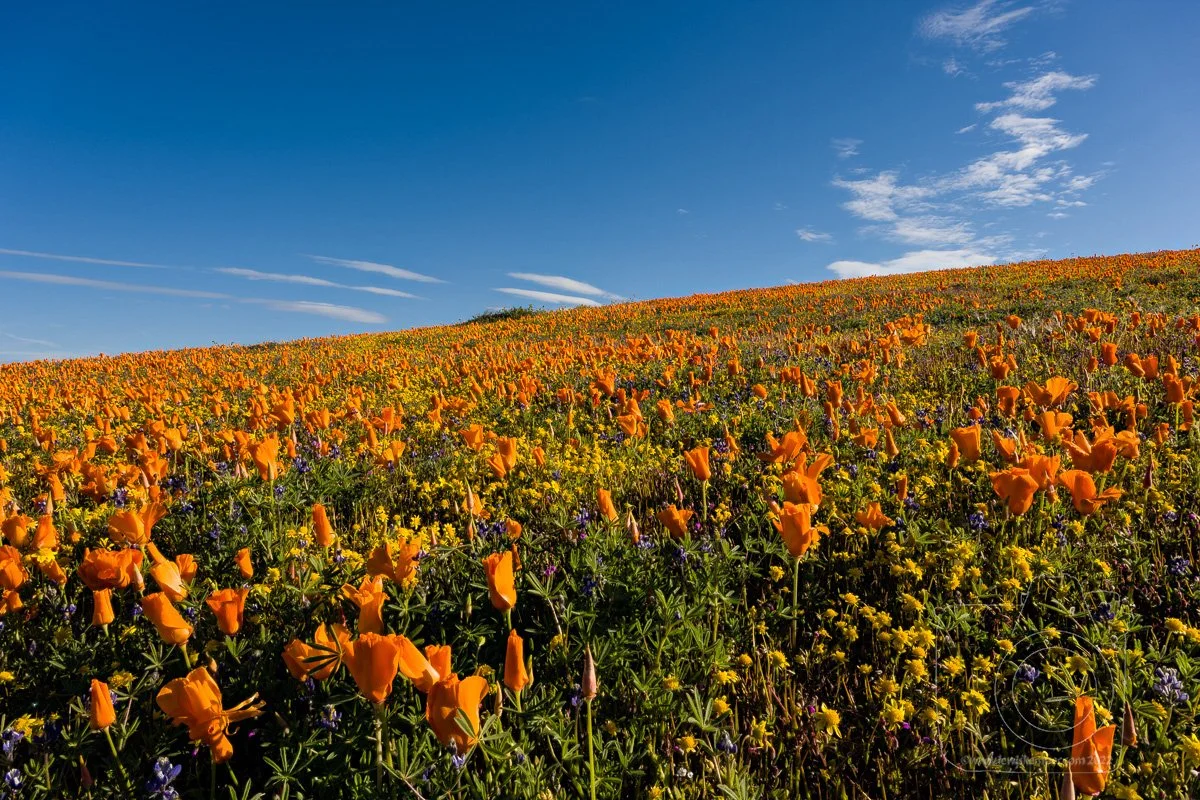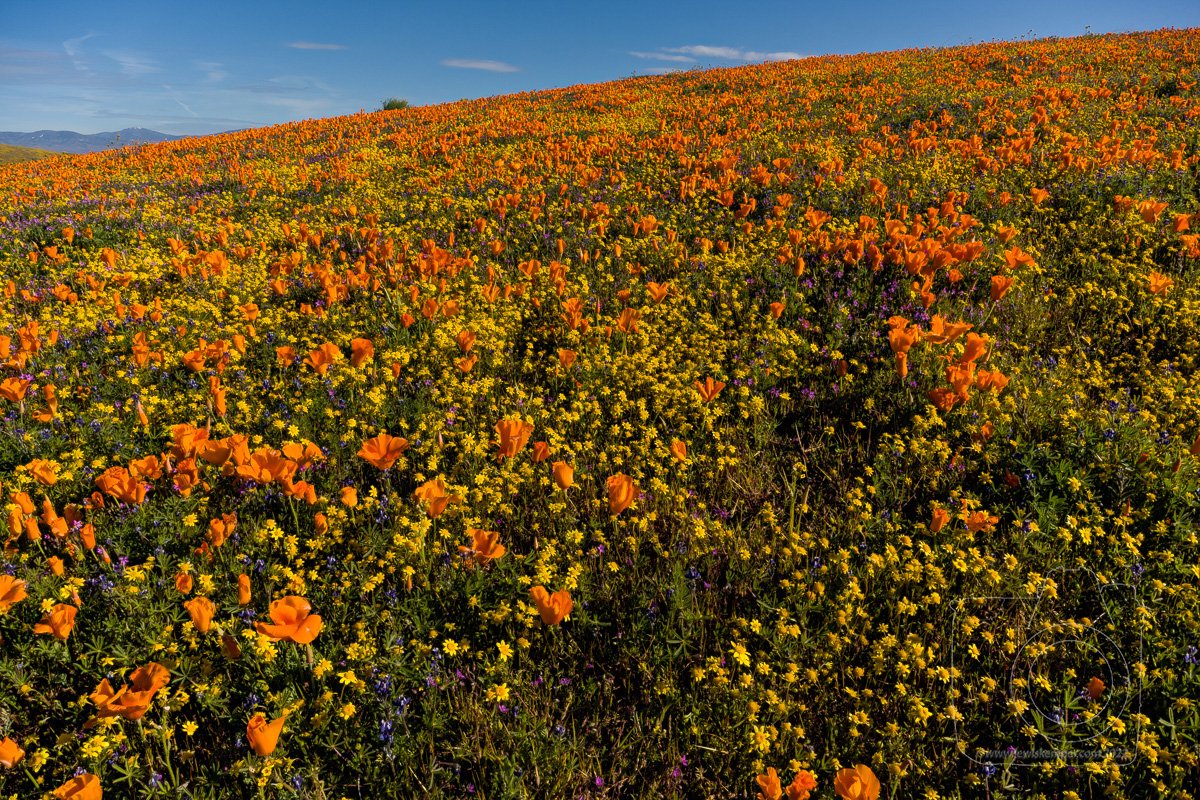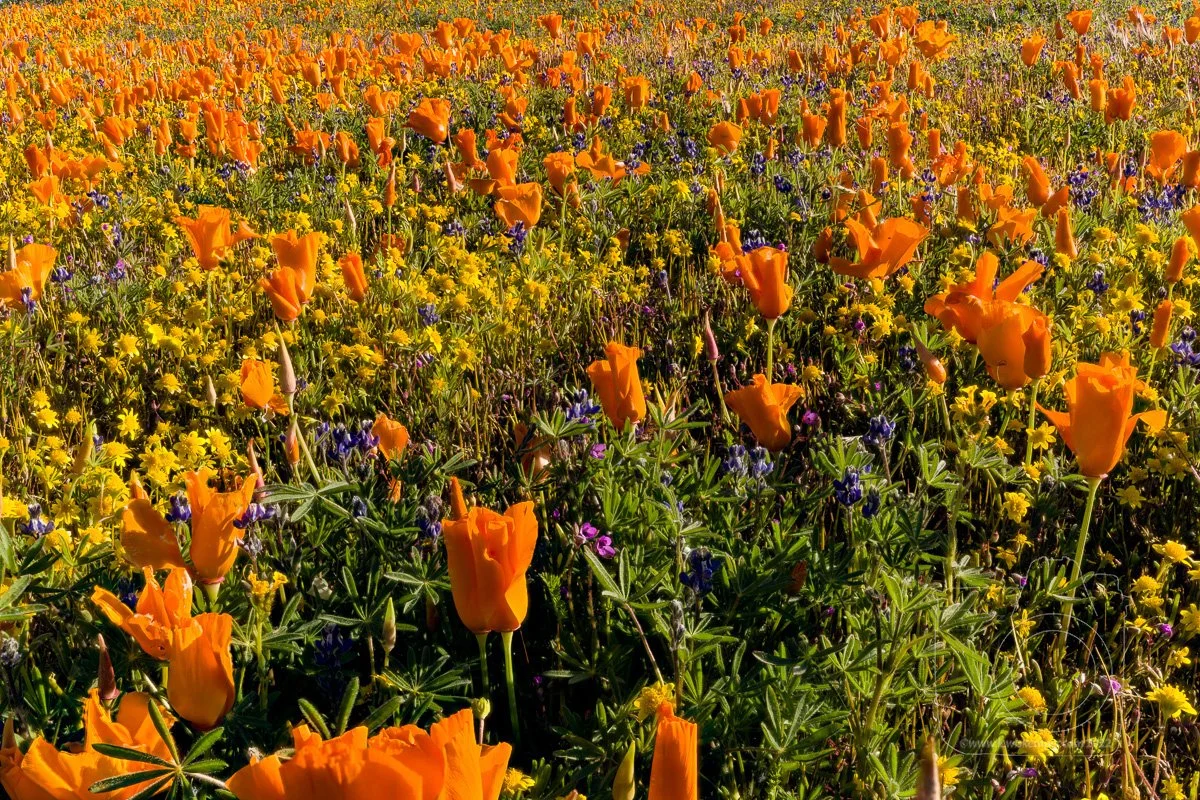Wildflower Delight - Wanderer Adventure!
Brenda, Lewis and Jed in Antelope Valley
One of the benefits of all the rain we have had here in California has been an exceptional wildflower season! I really have not photographed wildflowers in several years, so when the opportunity to photograph in the Carrizo Plains National Monument, a place I had never been, and spend 3 days camping in Wanderer came up, I couldn’t say no.
My good friends Brenda Tharp and her partner, Jed Manwaring, have recently begun living full time in their Sprinter Van. We have plans to hook up in Canada this summer and caravan together to Alaska. We decided to meet up in The Carrizo Plains, a place Brenda was familiar with. It is about a five-hour drive from Sacramento. We spent 2 days photographing in the monument and then headed over near the Antelope Poppy Preserve in Lancaster. This was my longest camping trip in Wanderer to date, so I was very excited to see how everything worked out.
The Carrizo Plain was nice, there were lots of flowers. Some of the biggest concentrations of flowers were just outside the monument in an area called Shell Creek, in San Luis Obispo county.
Of course, when photographing wildflowers, wind is always one of the biggest challenges. And as soon as we hit our first patch of flowers, I could see the wind was going to make photography a bit more difficult. There is no way to fight the wind, so I decided that I was going to have to photograph shallow depth of field images at high shutter speeds in order to get sharp pictures. I placed my old Tamron 90mm macro lens on a Nikon FTZ adapter, so I could use it on my Z9. Laying on my belly, careful not to crush too many flowers, I took close up images of flowers using the shallow depth of field to blur color and create more artistic than representative images. It was a lot of fun and reminded me of my early days in Yosemite working in Crane Flat Meadows, or down near the South Fork of the Merced River doing the same techniques. My biggest inspiration for these types of images was Marion Patterson. I’ll never forget when she was in Yosemite teaching for Ansel Adams during his summer workshop and giving a slide presentation in one of the classrooms at the elementary school. Her slides were on a continuous loop on a slide projector (for all of us old folks who remember those), I sat in that room and watched the presentation three times and then sought her out and told her how I thought those were some of the most beautiful pictures I had ever seen, and then I hugged her. We remain friends today.
Baby Blue Eyes, Carrizo Plains National Monument, CA
1/3200 sec; f/5.6; ISO 125; 90mm
California Poppy, Carrizo Plains National Monument, CA
1/12800 sec; f/4.5; ISO 1000; 90mm
California Poppy, Carrizo Plains National Monument, CA
1/12800 sec; f/5.6; ISO 1000; 90mm
I made a video of my trip and have a section of me photographing using this technique, you can see this video and others I have made about my van, Wanderer on my YouTube Channel at https://www.youtube.com/@1ndrr_ljk
If you like what you see, please subscribe to the channel.
There was a location in the plains where there were some distant hills covered with wildflowers, and I thought it would be great to put on a long telephoto lens and capture a compressed view of the hillsides. I took several hand-held pictures, but none of them looked sharp, so I pulled out my tripod and took some more. They didn’t look sharp either, they all looked like impressionistic paintings. I finally realized it was heat waves coming off the hills that were distorting my images. I tried going back to that scene early in the morning, but the light was not too good, and by the time the light appeared, the heat waves were back. I learned a lesson.
Heat wave affected image, nothing is sharp.
1/4000 sec; f/9; ISO 1250; 600mm
We then drove over towards the poppy preserve, and explored the dirt roads outside the preserve. It was a great place to photograph and a great place to camp!
Camping in Antelope Valley
Again, the first evening was rather windy and I again had to resort to the close-up shallow depth of field images. But I got some great pictures. The next morning when we awoke, the wind was calm, and I got to try the Focus Stacking feature of my Z9. Focus Stacking is the technique of taking multiple images at wide apertures, and different focus points, and stacking those images with special software to get a super sharp image from front to back. With the Nikon camera, I focus on the closest thing in the frame and then tell the camera to take a series of images, shifting the focus with each image, from the front to the back, until it covers the entire frame. Depending on the focal length of the lens and my proximity to my subjects this can happen in a as few of 4-6 images or as many as 25-30 images. Then I use Zerene Stacker software, which picks the sharpest part of each image and stacks them together to get me an image that is in extreme focus from foreground to background. There are several other software programs that can do this, but Zerene Stacker is my preference.
California Poppies, Antelope Valley, CA
16 exposures stacked in Zerene Stacker, 1/640 sec; f/5.0; ISO 64; 24mm
California Poppies, Antelope Valley, CA
14 exposures stacked in Zerene Stacker, 1/1000 sec; f/4.5; ISO 64; 24mm
California Poppies, Antelope Valley, CA
29 exposures stacked in Zerene Stacker, 1/500 sec; f/5.0; ISO 64; 39mm
I hope you have some good wildflower experiences this spring.









